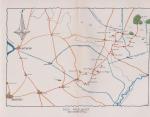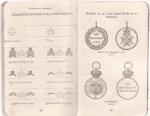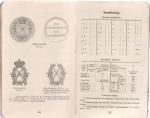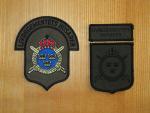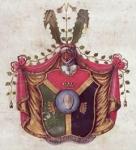-
Posts
432 -
Joined
-
Last visited
-
Days Won
1
Content Type
Profiles
Forums
Blogs
Gallery
Events
Store
Everything posted by GRA
-

Netherlands Dutch / Netherlands Badge Indentification Request
GRA replied to QSAMIKE's topic in Northern European & Baltic States
This link might be of interest... http://www.armeemuseum.ch/uploads/media/Seite_15_16_17_18_19_20_Kragenpatten_Ord_14_26_49_-_04.pdf /Jonas -

Netherlands Dutch / Netherlands Badge Indentification Request
GRA replied to QSAMIKE's topic in Northern European & Baltic States
Hello Mike! Aren't 3, 4 and 5 Swiss? I've got a vague memory having seen that kind of patches on Swiss uniforms in Nijmegen 25+ years ago... /Jonas -

Question on british camouflage
GRA replied to The Prussian's topic in Great Britain: Militaria: Badges, Uniforms & Equipment
Andy, I commented the uniforms in your link! Your jacket is of course DPM, however of what vintage I leave to Jock or someone else to determine. I really like the older jackets as yours where a tailor had some work with the patches even though as a patch collector, the velcro system makes it easier to just tear off and provide me with yet another sample... /Jonas -

Question on british camouflage
GRA replied to The Prussian's topic in Great Britain: Militaria: Badges, Uniforms & Equipment
I don't know what badges the Mercian Regiment wear on their dress uniforms, but I'm fairly certain that there's some Staffords traditions visible - the knot? / the glider? - that will remain in wear with those battalions that originated in the Cheshire Regt (1st Bn) or Worcestershire and Sherwood Foresters Regt (2nd Bn). I don't know what TRF the Staffords wore on their DPM's, but it could well have been a knot though in another shape than the 3rd Mercian TRF. That camo pattern is the latest pattern of the British forces, replacing DPM. /Jonas -

Question on british camouflage
GRA replied to The Prussian's topic in Great Britain: Militaria: Badges, Uniforms & Equipment
Hello Andy! That jacket could be as late as from the 3rd Bn Mercian Regiment too (2007-2014). It was the part of the new regiment that the 1st Bn Staffordshire Regiment provided, all regular battalions of the Mercian Regiment wear (wore, in the case of the 3rd Bn) diamond-shaped TRF's. /Jonas -
Hello Kevin! You may find this map from "The Story of the Twenty-Third Hussars 1940-1946" interesting, as well as a link to download "History of 15th-19th The King's Hussars 1939-1945" (21.16mb). 23rd Hussars served in the 29th Armoured Brigade and 15th/19th The King's Hussars was with the divisional troops of the 11th Armoured Division. http://www.lightdragoons.org.uk/downloads.html /Jonas
-
You're welcome Rick! There's more in "History of the 4th/7th Royal Dragoon Guards" (1982) by J.M. Brereton, chapter XIII "The Great War" section 1. "First Blood". A corporal Ernest Thomas of 4th Tp C Sqn are mentioned as having fired the first rifle shot of the war on 22nd August. In the 4th/7th DG book is also mentioned No 4 gun of E Battery RHA as having fired the first artillery round at 1115 hours on 22nd August at Bray (Mons-Charleroi road). /Jonas
-
"Teenage Tommy - Memoirs of a Cavalryman in the First World War" (1996, reprinted 2013) by Richard Van Emden - the memoirs of trooper Benjamin Clouting of the 4th (Royal Irish) Dragoon Guards is well worth reading. Among its contents are descriptions of the action at Casteau on the 22nd as well as the charge at Audregnies on the 24th. "Record of the 4th Royal Irish Dragoon Guards in the Great War 1914-1918" (1925, reprinted 2002) by Rev Harold Gibb contains six pages on those early actions of the war. /Jonas
-

Sweden Swedish machine gun badge? can anyone help
GRA replied to medalman90's topic in Northern European & Baltic States
Here are some scans from "Undervisning för ryttaren" ("Instruction for the trooper") - basically a "soldier's bible" containing all information he needed, from patriotic stories(!) and army organisation to anatomy of the horse. My book once belonged to a corporal from my regiment who served in the early 1920's. The normal shooting awards (the ones with crossed rifles) dates from 1907 and the MG awards dates from 1918. - Gold medal with enamel (silver medal 10 consecutive years) - Gold medal (silver medal 5 consecutive years) - Silver medal (plus a small sum of money) - Silver badge (plus a small sum of money) - Silver badge The link contains pictures of the awards - "Arméns skyttemedalj..." and "Arméns kulspruteskyttemedalj..." are the relevant ones. http://medalj.nu/ribbon_list.asp /Jonas -

Sweden Swedish machine gun badge? can anyone help
GRA replied to medalman90's topic in Northern European & Baltic States
Hello medalman90! This is a normal award for shooting with support weapons. It also exists with crossed rifles for shooting with rifles, assault rifles, sub-machine guns and pistols. This "medal" also exist in gold after re-qualifying for five consecutive years, a gold with blue enamel "medal" also exist (at least for the small arms version), if not reaching "medal" level, a silver badge could also be awarded. As I recall, when I did my national service 25 years ago, it may have been awarded also for ATGW shooting, not only for MG shooting. I think a small sum of money was also included in the award, the badge was awarded with and without money, thus the it has the name of "price-shooting medal" - an award with a sum of money to be won with it. As to the age, well, the crossed rifles version is shown in the "Undervisning för ryttaren", 1916 edition. /Jonas -

Sweden Swedish Cavalry cloth insignia - Life Regiment Hussars
GRA replied to GRA's topic in Northern European & Baltic States
The old and new (from 2013) patches of the regiment. The new green and black patch consists of a shield and a separate tab, both are embroidered on a velcro backing. The regimental Ranger tab is now worn on the right arm, though I can't remember ever seeing one worn together with the old regimental patch. I have, however, seen one of the new "Livregementets husarer" tabs worn with a battalion patch. -
Not necessarily! Twenty-something years ago graduates of technical gymnasium (roughly high school level, graduating at age twenty - normally!) in Sweden could obtain a 18K gold ring for wear on the left hand. As that particular branch of gymnasium was four years instead of the normal three, the extra year was the "ring-qualifying" year (though it wasn't mandatory as the final grades for applying to university was given at the "normal" end of gymnasium after the third year). I still wear mine with pride as its design is unique among those rings, normally the technical gymnasium rings are similar, but my school's design stands out from the rest. /Jonas
-
All of the above comes from Buttery, I once bought it to learn more about Louis Nolan the man, but it certainly has some interesting information on the side too! One cannot help thinking what would have become of him had he survived the Crimean War, he was after all one of the most experienced officers of his age and rank in the British army at the time. I'm not sure it was a case of direct purchase of a commission as in the British army. Money was certainly involved when obtaining a place at a cadet school ("school fees" etc?), but one had to be approved by regimental proprietor - the Inhaber - in order to be accepted as a cadet at all. Patronage would be closer to the truth than purchase. /Jonas
-
It seems like "Achilles" was tied to the 10th as a cadet, but confirmed as a subaltern in the 7th. Edmond Nolan entered the 10th Hussars even though Nolan Sr originally bought him a place in the 5th Hussars. Louis Nolan served at the time of the coronation of Queen Victoria. As both Archibald and Louis were confirmed in May 1835 and the former resigned within a year, he has to have been out in the spring of 1836 while Louis certainly served two years after. Louis was commissioned in the 15th Light Dragoons in the spring of 1839. /Jonas
-
Hello Trooper_D! It seems like Louis Nolan quit Austro-Hungarian service more in "bad standing" than as a deserter but I agree, his actions could have been smoother, and yes, "Achilles" was his older brother Archibald. Archibald Nolan resigned from his commission in the 7th Hussars within a year. Source; "Messenger of Death" by David Buttery. /Jonas
-

Need help with this unfinished badge.
GRA replied to danio's topic in Great Britain: Militaria: Badges, Uniforms & Equipment
Hello all! While I do not know what it is, I know what it is not! - It's not the Coat of Arms of Carl von Linné, see below. The motto is, as Mervyn say, the same though. /Jonas -

Bundesrepublik BW arm badges/shields.
GRA replied to SteveL's topic in Germany: Post 1945: Bundesrepublik & DDR
Happy New Year to both of you! Steve, it sounds good to start the new year with a new field of collecting, and Gordon, I look forward to see your uniforms whenever they turn up! /Jonas -

Bundesrepublik BW arm badges/shields.
GRA replied to SteveL's topic in Germany: Post 1945: Bundesrepublik & DDR
Hello Steve! "...as to been sewn on a uniform, I take it the moleskin field blouse was the item of uniform these badges would have applied to..................either the arms or chest positions ? Does any one have any period photographs showing these badges in wear ?..." I found some photos on internet of 3./PzGrenBtl72 from the mid-90's showing their patch (http://gmic.co.uk/index.php/topic/54016-bundeswehr-unit-patches/#entry494151) being worn on the upper left sleeve on both moleskin and camouflage uniforms (even on both uniforms in the same photo!), the battalion breast badge was also worn together with the patch. My patches from that battalion (3.Kp and 7.Kp) shows signs of having been worn. PzGrenBtl72 was a regular battalion, so I assume there had to have been at least a silent approval from the chain of command for the wearing of company patches, or was it up to the CO to decide? /Jonas -

Bundesrepublik BW arm badges/shields.
GRA replied to SteveL's topic in Germany: Post 1945: Bundesrepublik & DDR
Hello Steve! First, some of your questions regarding the wearing of these patches are - I hope - answered in this thread: http://gmic.co.uk/index.php/topic/54016-bundeswehr-unit-patches/ Second, the ID of some of the patches: "P453" - PzAufklKp 400 (armoured recce coy) "H62" - 3.Kp/AufklLBtl 3 Among the other patches I see Anti-Aircraft (both a Gepard armoured unit -"P452" - and a Patriot missile unit - "A940"), a sub-unit from Gebirgsjägerbrigade 23 - "U88" - (I assume, as the brigade badge is centered on it) and possibly also a MP unit - "H51". /Jonas -

9th Armored Division - Remagen - shoulder patch
GRA replied to IrishGunner's topic in United States of America
In "U.S. Military Shoulder Patches of the United States Armed Forces" 5th ed (Britton & Washington Jr), a yellow on dark khaki / brown Remagen tab is shown for the 9th Armored Division (same design for the 4th-9th Armoured Divisions, black on yellow for 1st-3rd Armored Divisions, among others). /Jonas


